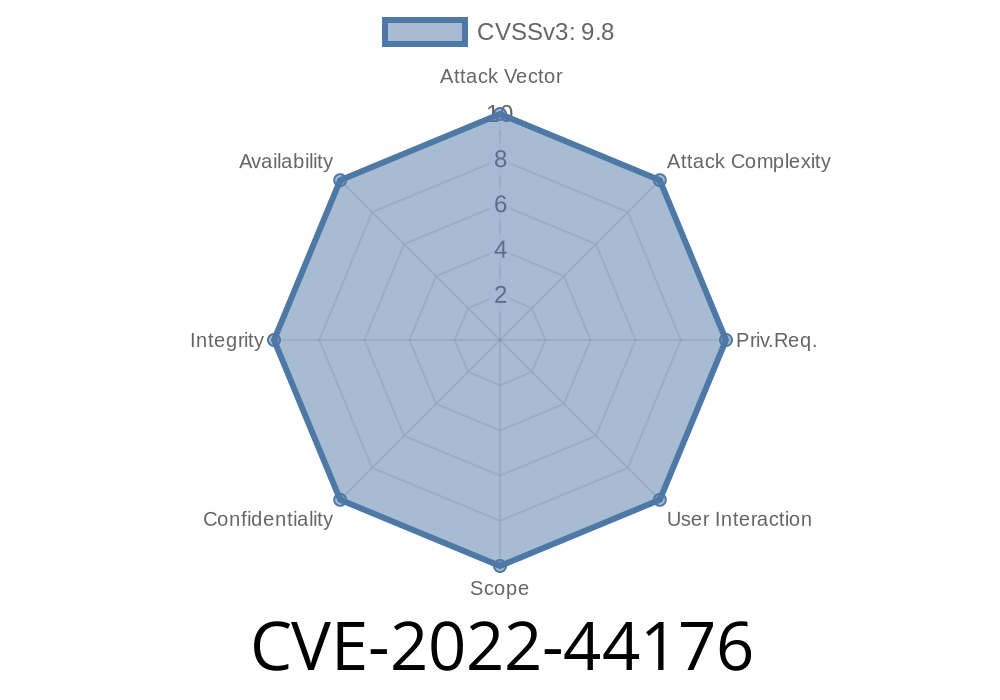A newly identified vulnerability, CVE-2022-44176, has been discovered in Tenda AC18 V15.03.05.19 routers that puts devices at risk to a buffer overflow attack. This security vulnerability could allow a remote attacker to execute arbitrary code on the router, potentially leading to unauthorized system access and information disclosure. In this article, we will explore the details of this vulnerability, including the affected function, a code snippet demonstrating the issue, and original sources. We will also discuss potential mitigations and best practices for avoiding such vulnerabilities in the future.
Vulnerability Summary
CVE-2022-44176 is a critical vulnerability affecting Tenda AC18 V15.03.05.19 routers. The vulnerability is found in the function fromSetRouteStatic and occurs because of improper boundary checks performed on user-supplied data. The attacker can exploit this vulnerability by sending a specially crafted HTTP POST request with a payload that triggers a stack-based buffer overflow, potentially leading to code execution and complete compromise of the device.
Affected Function: fromSetRouteStatic
The bug occurs in the fromSetRouteStatic function, which is responsible for processing HTTP requests related to setting static routes on the router. The code snippet below demonstrates the issue:
int fromSetRouteStatic(request *req) {
char buffer[256];
// Process the HTTP request
strncpy(buffer, req->user_data, sizeof(buffer));
// Call vulnerable function
parse_and_set_static_routes(buffer);
return 1;
}
As we can see in the code snippet, the function copies data from the user-controlled req->user_data buffer into a fixed-size buffer without checking the input length. This can result in a buffer overflow when the user-supplied data exceeds the buffer size.
Exploit Details
The attacker can exploit this vulnerability by submitting an HTTP POST request with an oversized payload to the fromSetRouteStatic function. An example of such a request is shown below:
POST /goform/fromSetRouteStatic HTTP/1.1
Host: target_route
Content-Length: 300
Content-Type: application/x-www-form-urlencoded
data=AAAAAAAAAAAAAAAAAAAAAAAAA... (300 bytes in length)
The payload 'A's cause a buffer overflow, which could lead to arbitrary code execution if an attacker carefully crafts the input data.
References and Further Reading
Additional details and information regarding this vulnerability can be found at its official CVE entry:
- CVE-2022-44176: https://cve.mitre.org/cgi-bin/cvename.cgi?name=CVE-2022-44176
Mitigations
Tenda has not yet released an official patch for this vulnerability. Until a patch is available, users are advised to monitor their router logs for any suspicious activity and block any unauthorized access to their local network. Additionally, users should ensure they have strong, unique, and regularly updated credentials for their routers and disable remote management whenever possible.
Conclusion
The discovery of this vulnerability in Tenda AC18 V15.03.05.19 routers highlights the importance of proper input validation and buffer handling in software development. By sharing these details and understanding how the exploit occurs, developers can integrate better security practices and users can take steps to protect their devices from potential attacks.
Timeline
Published on: 11/21/2022 18:15:00 UTC
Last modified on: 11/28/2022 13:47:00 UTC
